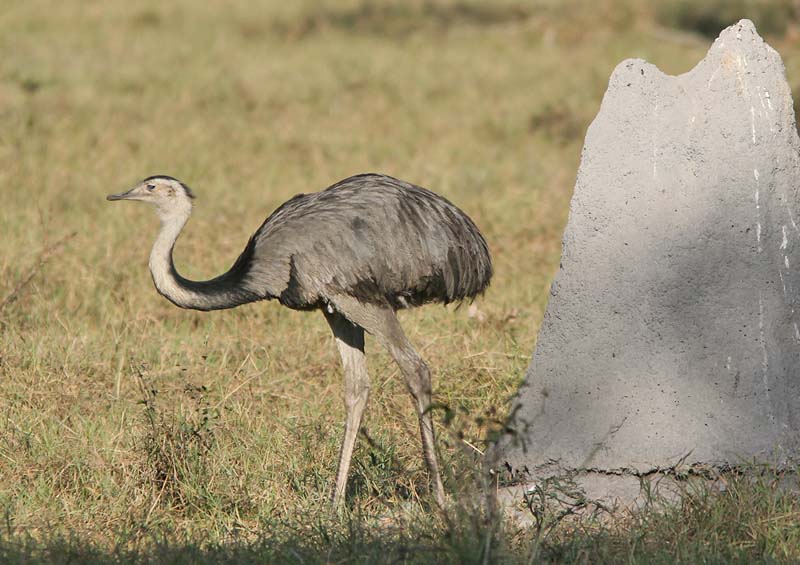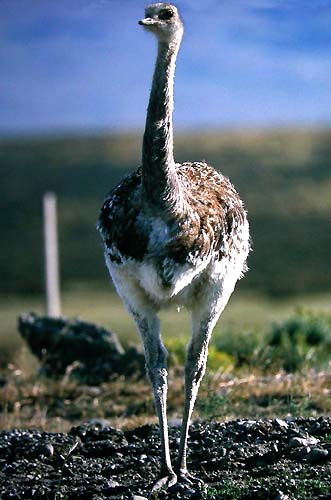
a web page by Don Roberson |
RHEAS Rheidae |
|
The larger species is Greater Rhea (left), shown here next to a huge termite mound in the Brazilian Pantanal, formed from the gray mud of that huge swampland. Their habitat is open pampas or broken grasslands in cerrado. The species ranges from e. Brazil south to c. Argentina. |
Lesser Rhea has two disjunct populations: one in the puna zone of northern Chile, and the other in barren steppes of southernmost Argentina and Chile. Murray Lord took this nice picture of Lesser Rhea (right) of a bird from the latter population. The breeding behavior of rheas is quite remarkable, as I first learned from wonderful footage in David Attenborough's Life of Birds. During the nesting season, males compete for territories on the plains. Once established, each tries to attract groups of females by running quickly towards them with outspread wings. Once sufficient females are assembled, he displays with voice and wing-shaking. After copulation, the male leads the female to a nest which he has previously prepared, and there she will lay her egg. He tries to get as many females as possible to lay in this group nest, and accumulates 13-30 eggs. The male alone incubates; all eggs hatch synchronously within a 24-28 hour period. He alone cares for the striped young, jealously guarding them against all comers for the next six months (lost youngsters are sometimes "adopted" by other males). When the young are half-grown they can wander on their own, but generally they remain in their groups of siblings until 2-3 years old (Folch 1992). |
Photos: The Greater Rhea Rhea americana in the Pantanal south of Poconé, Mato Grosso, Brazil, on 18 July 2010. Murray Lord photographed the Lesser Rhea Pterocnemia pennata near Torres del Paine Nat'l Park, Chile, in January 2001. Photos © Don Roberson & Murray Lord, respectively, used with permission; all rights reserved. Bibliographic note: There is no "family book" per se, but a fine introduction to this family, with some fine photos, is in Folch (1992). Literature cited:
|
 The two species of flightless rheas are endemic to southern South America. They are a New World equivalent of an Ostrich and, indeed, ostriches and rheas evolved from a common ancestor after African and South American plates split ancient Gondwanaland (Folch 1992).
The two species of flightless rheas are endemic to southern South America. They are a New World equivalent of an Ostrich and, indeed, ostriches and rheas evolved from a common ancestor after African and South American plates split ancient Gondwanaland (Folch 1992). 